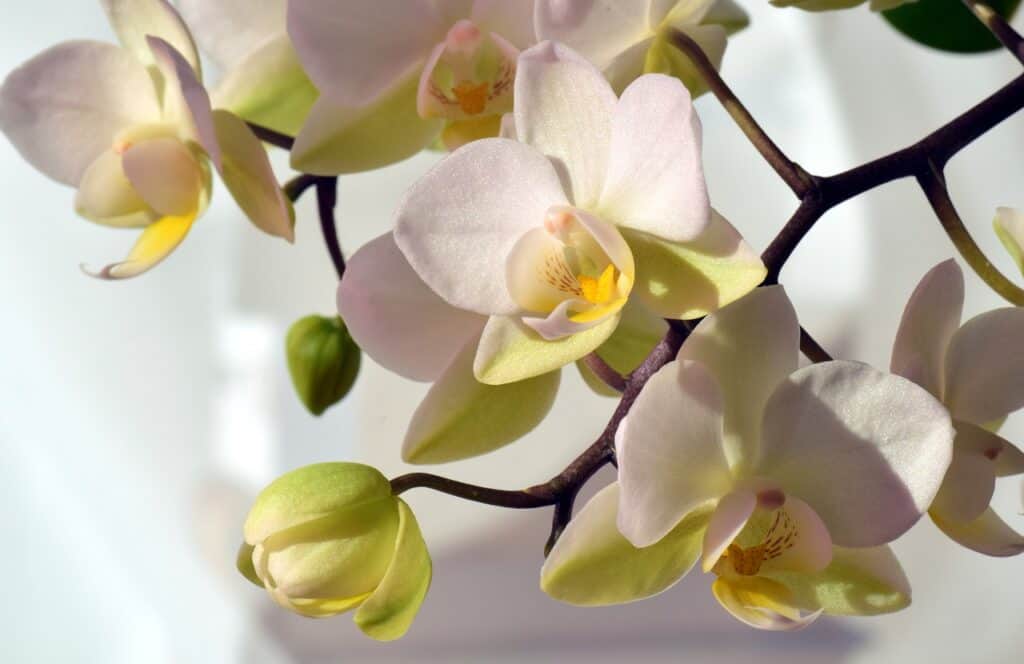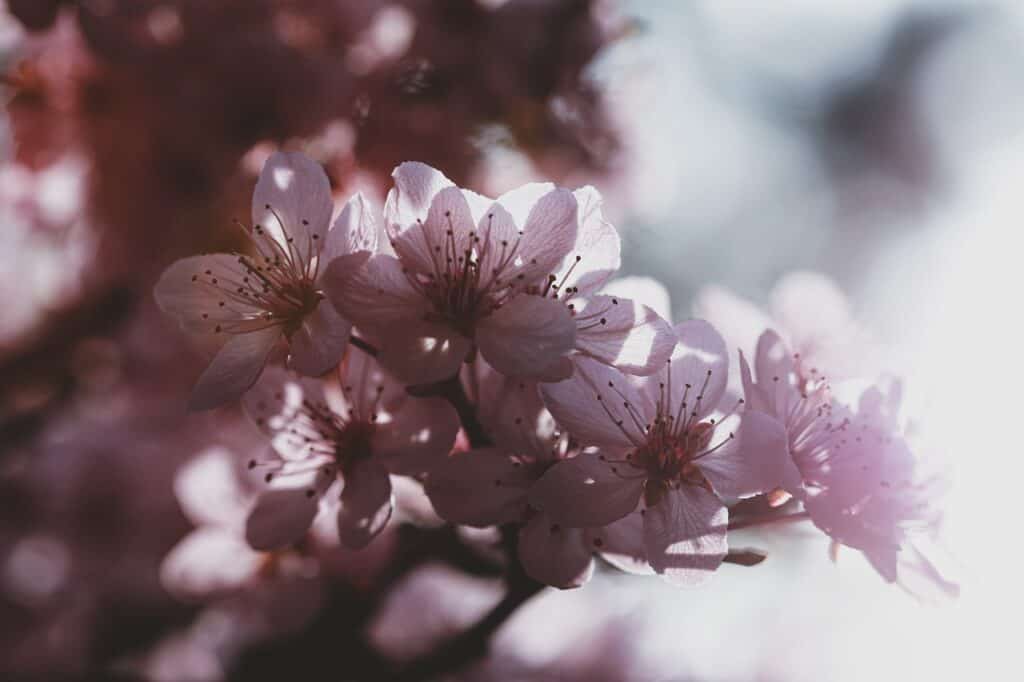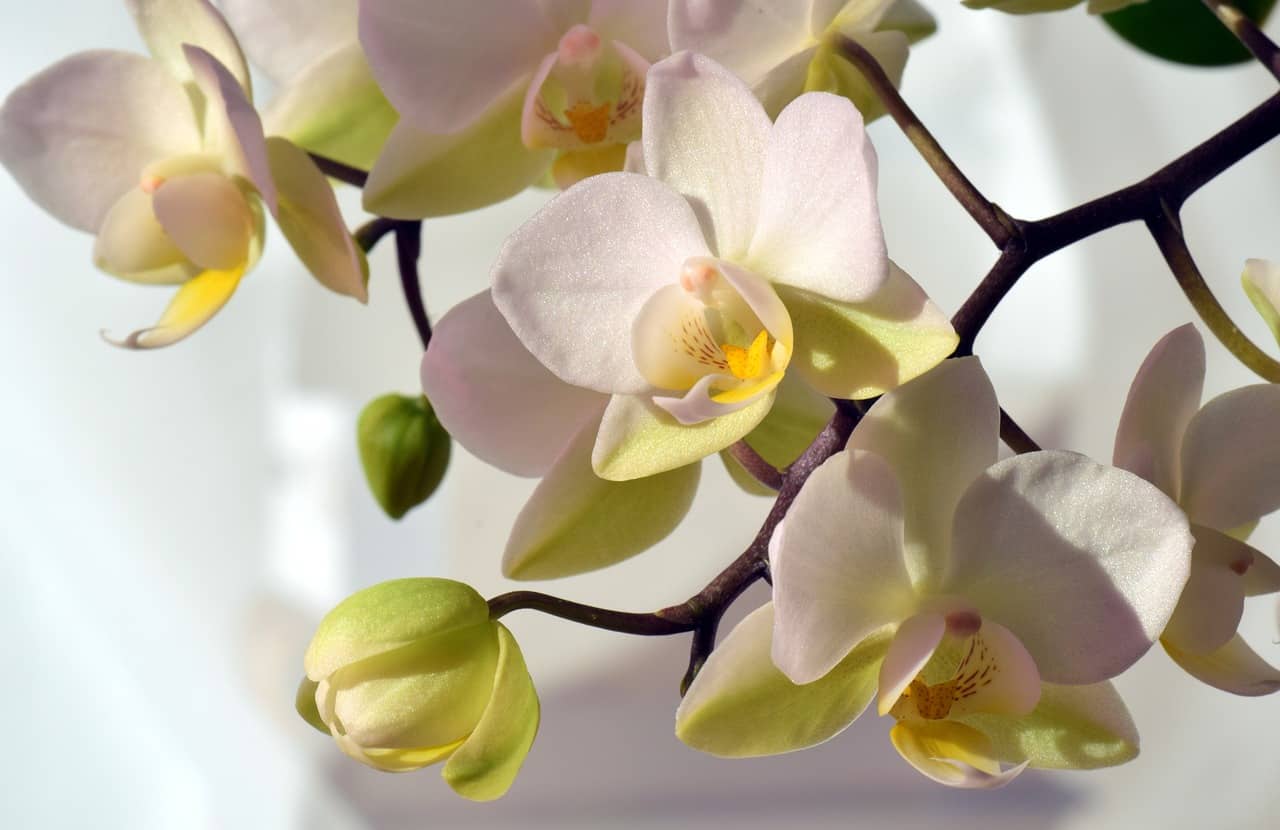Orchids are some of the most beautiful flowers in the world. These exotic and unique plants can bring a touch of elegance and sophistication to any space. However, despite their beauty, orchids can be relatively challenging to care for, and their flowers have a short lifespan. In this blog post, we will be discussing how long orchid flowers last and the factors that affect their lifespan. We’ll also provide tips on how to prolong the beauty of your orchid flowers so that you can enjoy them for as long as possible.

1 Factor that affects orchid flower lifespan
The average lifespan of an orchid flower ranges from a few days to several weeks, depending on the species, growing conditions, and care provided. One of the most critical factors that affect the longevity of orchid flowers is the species of orchid. Some orchids, such as Phalaenopsis, can have blooms that last up to three months, while others, such as the Cattleya, have flowers that last only a few days.
Another factor that affects orchid flower lifespan is the growing environment in which an orchid is kept. For example, temperatures that are too cold or hot can cause flowers to wilt and die quickly. Similarly, changes in humidity can cause buds to fall off before they have a chance to open. Additionally, orchids that are over or under-watered are also more likely to have shorter-lived flowers.
Finally, how well the orchid is cared for can also impact the longevity of the flowers. Plants that are not fed with appropriate fertilizers or get insufficient sunlight could have flowers that fade earlier than expected.
Tips for Prolonging Orchid flower lifespan
While the factors discussed above can be out of our control, there are still many things you can do to ensure that your orchids’ flowers last as long as possible. Here are some tips to help you prolong the beauty of your orchid flowers:
Proper watering and fertilization
One of the critical things to keep in mind is that orchids should neither be over nor under-watered. In general, orchids should be watered when the potting mix is nearly dry, but not bone dry. Orchids should never be left standing in water. When watering, take the plant to a sink or bathtub and let it drain for at least an hour after watering.
Additionally, orchids should be fertilized regularly, but with caution. Over-fertilization can damage the roots, leading to shorter-lived flowers. Use a water-soluble orchid fertilizer that’s specifically formulated for orchids. Fertilize only when the plant is in active growth, about once in eight weeks.
Optimal lighting and temperature
Orchids are known for their love of light. However, too much direct sunlight can scorch the leaves and flowers, causing them to wilt faster. On the other hand, insufficient lighting can lead to fewer blooms or no blooms at all. Finding the right balance can be a bit of trial and error, as different orchid species have different light requirements. Generally, most orchids thrive in bright, indirect light.
Similarly, getting the temperature right is crucial to prolonging the life of your orchid flowers. Orchids prefer an average temperature of 18°C to 30°C during the day and 12°C to 21°C at night. They also appreciate cooler temperatures at night, which encourages blooming.

Recognizing signs of decline in orchid flowers
Orchids can be delicate plants, and even the most attentive hobbyist can experience flower loss. It’s crucial to recognize early signs of decline and act quickly to combat any problems that arise.
One of the most common causes of flower decline is disease or pests. Be vigilant about early detection and be ready to swiftly act when spotted. Spider mites, scale, thrips, and mealybugs are some of the pests you should be on the lookout for. In the same vein, orchids can also contract fungal, bacterial, or viral diseases that can cause them to lose their blooms promptly. Pay attention to the appearance of spots or discoloration on the leaves, as well as any softness or rotting in any part of the plant.
Identifying common diseases and pests
Knowing the common pests and diseases that orchids suffer from can help you be more aware of what to look out for. For instance, spider mites are tiny, eight-legged creatures that cause stippling and yellowing of leaves. They are common during hot, dry weather conditions. Scale insects, on the other hand, can be identified by their small, hard shells with a yellow-brown color. They attach themselves to the leaves and can cause significant damage.
Regarding diseases, bacterial and fungal pathogens can cause various symptoms. Ring spots, rust, and black rot are some of the common disease symptoms to look out for. In nearly all cases, the earlier you catch these problems, the better chance you have at saving your orchid flowers.
Conclusion
In summary, there are several factors that affect how long your orchid flowers will last, including the species of the orchid, growing conditions, and the care provided. However, by using the tips outlined above and being aware of common pests and diseases, you can help prolong your orchid’s flowers’ lifespan. Keep a keen eye on your orchid, take note of any signs of decline in the blooms or the leaves, and act quickly when necessary. By doing so, you can enjoy the beauty of your orchids for an extended period.

